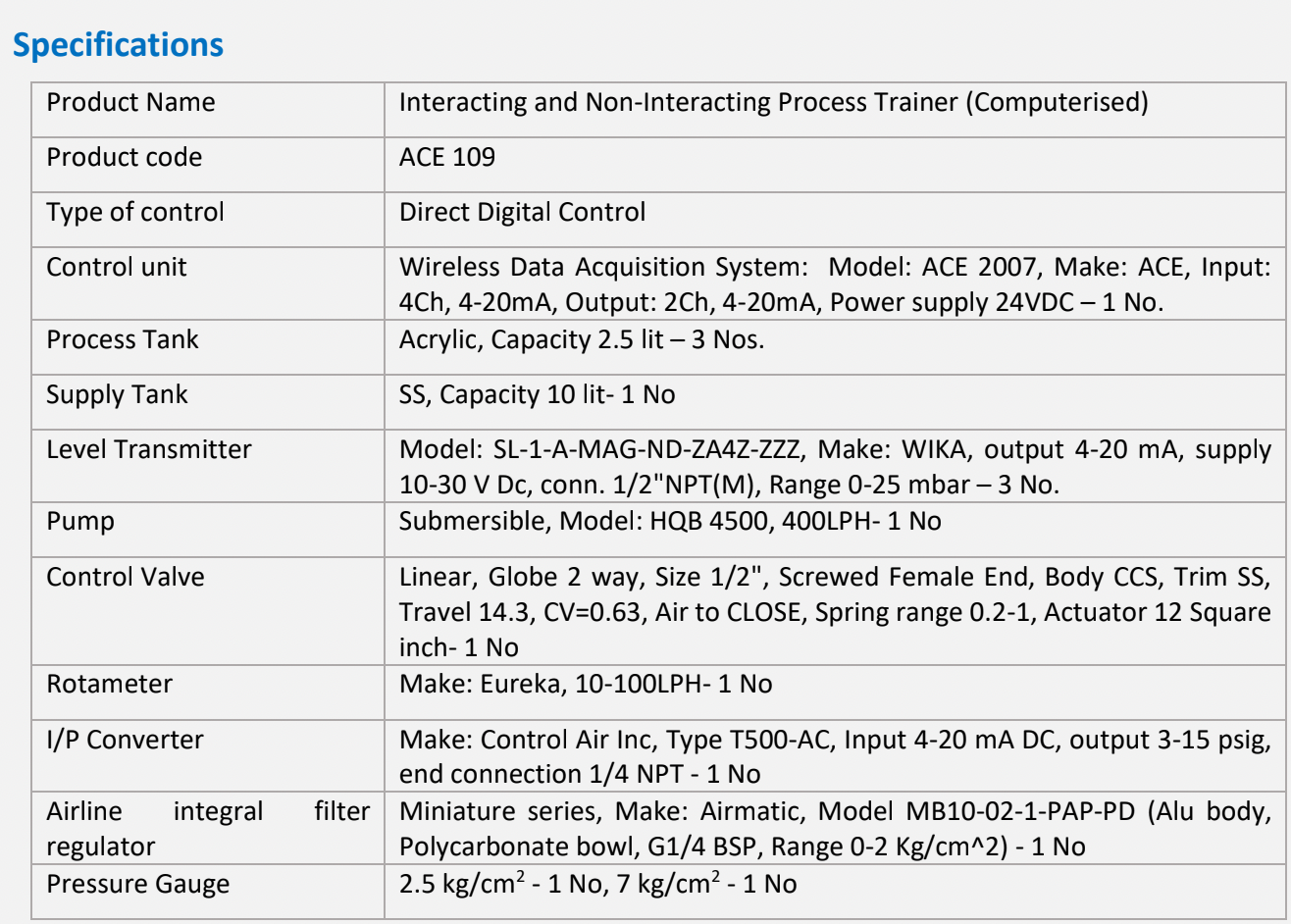Interacting and Non-Interacting Process Trainer (Computerised)
Description
The Interacting and Non-Interacting Process Trainer is designed to understand the elements of second order interacting and non-interacting process and its control. It consists of three level process tanks and two- level transmitter with necessary drain valve arrangements. It is designed to operate the setup in interacting mode or in non-interacting mode. The setup can also be used to estimate the second order model of interacting and non-interacting tank processes. The control algorithm works by measuring the second tank level and controlling the first tank inflow. A control valve operates on a 3 to 15 psi pressure signal is used to regulate the
inflow. A current to pressure (I/P) converter is used to convert the output of the controller (4-20mA) to the signal pressure. The process parameter can be accessed and controlled by a data acquisition unit. These units along with necessary piping are fitted on the support frame. The setup is designed for tabletop placement and access. User friendly software will be supplied along with the hardware to perform different set of experiments.
Features
- Open loop / Closed loop operation
- Second order Model estimation
- On/Off, P, PI, PD and PID control mode study
- Interacting control study
- Open loop / closed loop / Auto tuning
- Non-Interacting control study
- Stability analysis
- Interface with LabVIEW / Matlab
- User friendly GUI
- Single click data log, export features
Range of Experiments
- Study of Open loop characteristics
- Empirical Model Estimation
- Study of On/Off Control & Hysteresis
- Study of P Mode Control & Bias
- Study of PI Mode Control
- Study of PD Mode Control
- Study of PID Mode Control
- Open loop & Closed loop PID tuning
- Stability analysis
- Interacting Tank Control
- Non-Interacting Tank Control
- Level-Level Cascade Control
- Over Ride Control
- Fuzzy Logic Control
Product Specifications


List of Experiments & Components


